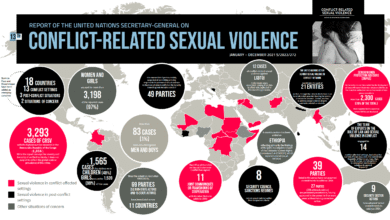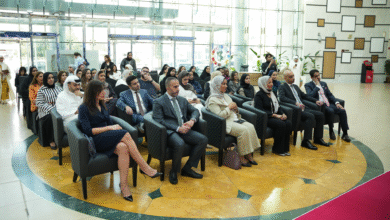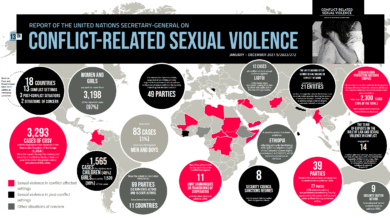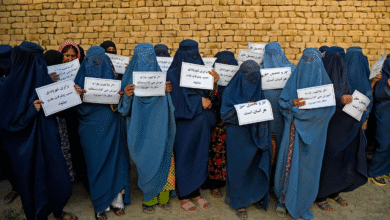Anaemia in South Asia: A Call for Urgent Action
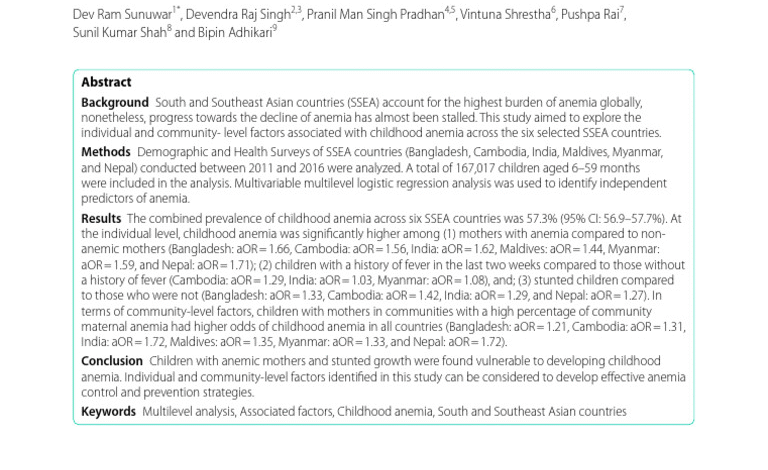
Anaemia in South Asia has emerged as a significant health crisis, particularly affecting the women and girls of this region. With over 259 million individuals already facing the challenges of this debilitating condition, the urgent call for comprehensive action has never been clearer. Organizations like UNICEF and WHO emphasize that this prevalent issue is not just a health concern—it poses a serious economic threat, costing South Asia approximately $32.5 billion annually. The situation demands targeted efforts in anaemia prevention, education, and nutritional support to alleviate the widespread impact on women’s health and their economic participation. As South Asia grapples with this public health challenge, the need for collaborative solutions and strong engagement from local communities becomes paramount.
The scourge of iron deficiency, often referred to as anaemia, continues to plague South Asian countries, significantly hindering women’s well-being and their economic prospects. This condition, characterized by a lack of sufficient healthy red blood cells, is particularly prevalent among marginalized populations, leading to dire consequences for both maternal and child health. With its economic ramifications, the high prevalence of anaemia poses a substantial burden on national healthcare systems, calling for immediate initiatives aimed at improving nutrition and overall health outcomes. Enhanced collaboration among governmental and non-governmental organizations is essential to address the urgent need for effective strategies, particularly regarding women’s health and community empowerment efforts. The ongoing UNICEF anaemia initiative highlights the importance of multi-sector partnerships in combating this pressing health issue.
Understanding Anaemia in South Asia
Anaemia is a significant public health issue across South Asia, particularly affecting women and girls. This condition, characterized by a lack of healthy red blood cells, severely limits the body’s capacity to transport oxygen, which is essential for various bodily functions. In South Asia, the prevalence is alarming, with approximately 50% of women of reproductive age affected. This subset of the population is particularly vulnerable as they face compounded risks from poor nutrition, lack of education, and limited access to healthcare services.
Moreover, the implications of anaemia extend far beyond individual health. It poses a complex challenge to public health, education, and economic stability in South Asia. When women are anaemic, their work productivity drops, leading to economic losses that can total billions annually. This creates a vicious cycle, as economic hardship discourages investment in health and education, further perpetuating anaemia. Addressing this issue is therefore critical not only for improving women’s health but also for fostering broader socio-economic development in the region.
The Economic Impact of Anaemia in the Region
The economic ramifications of anaemia in South Asia are staggering, with estimates suggesting it costs the region around $32.5 billion per year. This loss primarily arises from reduced labor force participation and decreased productivity among anaemic women who struggle with chronic fatigue and poor health outcomes. Furthermore, anaemia is linked to myriad complications during pregnancy, resulting in low birth weight and infant mortality, which further strains health systems and perpetuates poverty.
Additionally, studies illustrate that countries with higher rates of anaemia often face slower economic growth due to losses in human capital. Consequently, investing in women’s health and nutrition is not merely a healthcare issue but a strategic economic imperative. By tackling anaemia through targeted prevention programs and enhancing access to nutritious foods, South Asian countries can significantly alleviate economic burdens and unlock the full potential of their populations.
Initiatives to Combat Anaemia: The UNICEF Strategy
The UNICEF Anaemia Initiative is a critical response to the pressing health crisis affecting women and girls in South Asia. This initiative emphasizes the need for collaborative efforts across multiple sectors, including health, education, and nutrition. One of the key strategies involves increasing access to iron and folic acid supplements, which can dramatically improve health outcomes for women of reproductive age. UNICEF advocates for policies that incorporate educational programs about nutrition and health, empowering women with the knowledge they need to make informed choices about their diets.
In addition, UNICEF’s strategy includes building community-based programs that prioritize the most vulnerable populations. Enhancing access to maternal and child health services, providing fortified foods, and promoting awareness about the symptoms and risks of anaemia are integral components of the initiative. By focusing on community involvement and support, UNICEF aims to foster sustained improvements in health and nutrition, ultimately reducing the prevalence of anaemia in South Asia.
Prevention Strategies and Best Practices
Preventing anaemia in South Asia requires a multifaceted approach that encompasses nutritional, educational, and healthcare interventions. Key strategies include improving dietary intake of iron and vitamin-rich foods, such as leafy greens, beans, and fortified cereals. Additionally, education campaigns can aid in raising awareness about dietary needs, especially in marginalized communities where nutrient-rich foods may not be readily available.
Collaboration between governments, non-profits, and local communities is essential in implementing these strategies effectively. Innovative approaches such as community kitchens, nutrition workshops, and school-based health programs can provide both education and access to healthy foods. Strengthening the healthcare system to ensure regular screenings and timely intervention for at-risk populations is also crucial in ensuring sustainable anaemia prevention.
Community-Level Interventions for Anaemia Awareness
At the grassroots level, community involvement plays a vital role in combating anaemia. Initiatives such as providing nutritional support programs and enhancing the role of community health workers have shown significant benefits. For instance, organizations are training female health volunteers to deliver essential health education on nutrition and anaemia prevention, helping to bridge the gap between healthcare services and underserved populations.
Moreover, community-driven approaches foster an environment where women can share their experiences and strategies for improving their nutrition and health. Initiatives such as the Sutkeri Poshan Koseli, which provides pregnant women with access to nutritious foods, not only improve maternal health but also raise awareness about the importance of adequate nutrition during pregnancy and early childhood.
Success Stories: Countries Leading the Charge
Countries like Sri Lanka, India, and Bangladesh are making strides in combating anaemia through innovative national nutrition programs and community engagement. For example, Sri Lanka’s national nutrition initiative focuses on scaling up interventions in the most affected districts, incorporating iron supplementation in schools, and promoting dietary diversity among adolescents. These efforts have shown marked improvements in the nutritional status of women and girls across the nation.
Similarly, India is integrating effective nutritional strategies into its public health campaigns, targeting high-burden states to implement supplemental feeding programs and education initiatives. Bangladesh also stands out with its school-based health initiatives that provide fortified meals and health education, coordinated across different governmental ministries. These success stories provide blueprints for other countries in the region to emulate, highlighting the power of coordinated, culturally relevant approaches in tackling anaemia.
The Role of Education in Anaemia Prevention
Education is a powerful tool in addressing anaemia, particularly among women and adolescent girls in South Asia. Empowering women through education fosters a better understanding of nutritional needs, health risks associated with anaemia, and the importance of prenatal care. Moreover, educated women are more likely to make informed decisions regarding their health and seek medical care, ultimately reducing anaemia prevalence.
Programs that combine health education with nutritional literacy have proven particularly effective. By integrating nutrition education into school curriculums, communities can raise awareness about healthy eating and the prevention of anaemia from a young age. This not only benefits individual health but also contributes to a healthier community, as educated women are likely to prioritize the health and nutrition of their families.
Collaborative Efforts: Health Systems Strengthening
Enhancing healthcare systems is fundamental to combating anaemia in South Asia. Governments and health organizations must work together to ensure that women and girls have access to vital health services, including routine screenings for anaemia and maternal health care. Strengthening health infrastructure, particularly in rural regions, allows for early detection and treatment of anaemia, which is crucial in preventing complications.
Inter-ministerial coordination and collaboration are essential for effective implementation of health initiatives. Sharing resources and expertise across sectors can facilitate comprehensive health programs aimed at reducing anaemia. By fostering an environment where health, education, and community services can work in unison, South Asia can take significant strides toward eliminating this health crisis and improving the quality of life for women and girls.
Conclusion: A Call to Action for Anaemia in South Asia
The urgent call to action regarding anaemia in South Asia highlights the need for a cohesive strategy that engages all sectors of society. As the data indicates, the health and economic implications of anaemia are profound, particularly for women and girls living in poverty. This is a pivotal moment for governments, communities, and organizations to join forces in creating comprehensive, sustainable solutions to this pervasive health crisis.
Collective action can lead to tangible improvements in health outcomes and economic stability, paving the way for a healthier future. By prioritizing women’s health through education, better nutrition, and improved healthcare services, South Asia can work towards breaking the cycle of poverty and poor health associated with anaemia, ultimately empowering its women and strengthening its economies.
Frequently Asked Questions
What is the impact of anaemia on women’s health in South Asia?
Anaemia poses a significant threat to women’s health in South Asia, impacting the body’s ability to carry oxygen, leading to chronic fatigue and poor maternal outcomes. With an estimated 259 million women and girls affected, anaemia contributes to health crises and limits economic participation, which is especially alarming in poverty-stricken regions.
How does anaemia in South Asia affect economic development?
The economic impact of anaemia in South Asia is staggering, costing the region approximately $32.5 billion annually. This loss perpetuates cycles of poverty and undermines economic productivity, as anaemic women face challenges in work performance and maternal health, ultimately affecting community development.
What are effective anaemia prevention strategies in South Asia?
Anaemia prevention in South Asia includes strategies such as iron and folic acid supplementation, promoting iron-rich diets, enhancing sanitation, and improving maternal health services. Collaborative multi-sector approaches involving health systems, nutrition programs, and education can lead to sustainable solutions for addressing this health crisis.
What role does UNICEF play in addressing anaemia in South Asia?
UNICEF is actively involved in tackling anaemia in South Asia through initiatives that focus on improving nutrition for women and girls. By analyzing the impact of anaemia and advocating for integrated health services, UNICEF aims to mobilize resources and partnerships to combat this pressing health issue.
How has Nepal successfully reduced anaemia rates among women of reproductive age?
Nepal has made significant progress in reducing anaemia rates among women of reproductive age by 7% since 2016, thanks to community health initiatives. The involvement of female community health volunteers in providing nutritional support and health education has been pivotal in reaching marginalized populations effectively.
What initiatives are being implemented in India and Pakistan to combat anaemia?
In India, high-burden states are integrating iron supplementation into school and maternal care programs, while Pakistan has launched community-based nutrition initiatives linked to reproductive health services for early detection and care. These collaborative efforts aim to address anaemia in both countries efficiently.
Why is addressing anaemia in South Asia essential for future generations?
Addressing anaemia in South Asia is crucial for nurturing healthier future generations, as it not only affects women’s health but also impacts child growth, learning, and economic stability. By ensuring women and girls receive proper nutrition and health care, communities can foster stronger economies and achievement of development goals.
How can public awareness campaigns mitigate anaemia in South Asia?
Public awareness campaigns are vital in mitigating anaemia in South Asia by educating communities about nutrition, hygiene, and the importance of health services. Campaigns that target pregnant women and adolescent girls can instigate behavioral changes that contribute to overall reduction of anaemia levels.
What actions can communities take to support anaemia prevention in South Asia?
Communities can support anaemia prevention in South Asia by promoting nutritional programs, engaging in local health initiatives, and facilitating access to iron-rich foods. Collective efforts to improve sanitation and encourage health-seeking behaviors among women and girls are also essential for effective prevention.
| Key Points |
|---|
| Anaemia in South Asia disproportionately affects women and girls, particularly from poorer backgrounds. |
| Projected rise in anaemia cases by 2030: +18 million. |
| Estimated current sufferers: 259 million. |
| Health impacts: Chronic fatigue, poor maternal outcomes, reduced educational and economic participation. |
| Anaemia costs South Asia $32.5 billion annually due to economic and health repercussions. |
| Preventable through iron supplementation, nutrition programs, and improved health services. |
| Countries like India and Pakistan are implementing innovative solutions to combat anaemia. |
| Teamwork is essential amongst governments, communities, and health sectors to tackle the crisis. |
Summary
Anaemia in South Asia poses a significant challenge to women’s health and broader socio-economic progress. The region, already the global epicenter for anaemia among adolescent girls and women, faces an alarming increase in cases if urgent action is not taken. Effective strategies and multi-sector collaboration are critical for addressing this silent health crisis, ensuring improved health outcomes, and fostering sustainable economic development. Moving forward, prioritizing nutritional programs and health services that empower women and girls remains essential in combating anaemia and building healthier societies.

